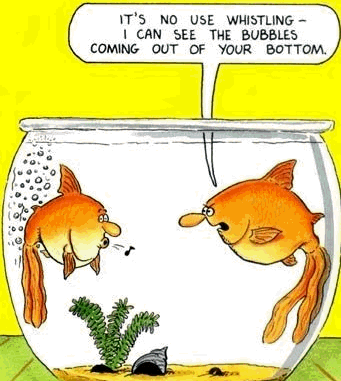Blonde Funny Jokes Biography
Goldie Jeanne Hawn (born November 21, 1945) is an American actress, film director, producer, and occasional singer. Hawn is known for her roles in television's Rowan & Martin's Laugh-In and films like Private Benjamin, Foul Play, Shampoo, Overboard, Bird on a Wire, Death Becomes Her, The First Wives Club, and Cactus Flower, for which she won the 1969 Academy Award for Best Supporting Actress. She is the mother of actors Oliver and Kate Hudson. Hawn has maintained a relationship with actor Kurt Russell since 1983.
Hawn was born in Washington, D.C., the daughter of Laura (née Steinhoff), a jewelry shop/dance school owner, and Edward Rutledge Hawn, a band musician who played at major events in Washington. She was named after her mother's aunt.[1] She has a sister, Patricia; her brother, Edward, died before she was born. Through her father, Hawn is a direct descendant of Edward Rutledge, the youngest signatory of the Declaration of Independence. Hawn was raised in Takoma Park, Maryland, a suburb of Washington, D.C., and attended Montgomery Blair High School in nearby Silver Spring, Maryland. Her father was Presbyterian and her mother was Jewish, the daughter of immigrants from Hungary;Hawn had a Jewish upbring.Hawn began taking ballet and tap dance lessons at the age of three, and danced in the chorus of the Ballet Russe de Monte Carlo production of The Nutcracker in 1955. She made her stage debut in 1961, playing Juliet in a Virginia Shakespeare Festival production of Romeo and Juliet. By 1964, she ran and taught in a ballet school, having dropped out of American University, where she was majoring in drama. In 1964, Hawn made her professional dancing debut in a production of Can-Can at the Texas Pavilion of the New York World's Fair. She began working as a professional dancer a year later, and appeared as a go-go dancer in New York City.
Hawn began her acting career as a cast member of the short-lived situation comedy Good Morning, World during the 1967-1968 television season, her role being that of the girlfriend of a radio disc jockey, with a stereotypical "dumb blonde" personality. Her next role, which brought her to international attention, was as one of the regular cast members on the 1968-1973 sketch comedy show, Rowan & Martin's Laugh-In. On the show, she would often break out into high-pitched giggles in the middle of a joke, and deliver a polished performance a moment after. Noted equally for her chipper attitude as for her bikini and painted body, Hawn was seen as something of a 1960s "It" girl.
Hawn's Laugh-In persona was parlayed into three popular film appearances in the late 1960s and early 1970s: Cactus Flower, There's a Girl in My Soup, and Butterflies Are Free. Hawn had made her feature film debut in a bit role as a giggling dancer in the 1968 film The One and Only, Genuine, Original Family Band, in which she was billed as "Goldie Jeanne", but in her first major film role, in Cactus Flower (1969), she won an Academy Award for Best Supporting Actress as Walter Matthau's suicidal fiancée.
Hawn's first husband was dancer (later director) Gus Trikonis, who appeared as a Shark in West Side Story; his sister Gina played Graziella, Riff's girlfriend. Her second husband was Bill Hudson, of the Hudson Brothers; the couple married in 1976 and divorced in 1980. They have two children, actor Oliver Hudson (born September 1976) and actress Kate Hudson (born April 1979).
Hawn has been in a relationship with actor Kurt Russell since 1983. They had first met while filming The One and Only, Genuine, Original Family Band (1968), but became involved only after meeting on the set of Swing Shift. They have a son, Wyatt Russell (born 1986).
Hawn is the stepmother of Kurt Russell's son Boston, and she became a grandmother in 2004 when her daughter gave birth to son Ryder Russell Robinson. Her second grandson, Wilder Brooks Hudson, was born to her son Oliver and his wife, actress Erinn Bartlett, in 2007. In 2010, Oliver and his wife had another boy, whom they named Bodhi Hawn Hudson. Her daughter Kate gave birth to her fourth grandson, named Bingham Hawn Bellamy, in July 2011.
Hawn became involved in Eastern philosophy in 1972. She practices Buddhism and has raised her children in both Buddhist and Jewish traditions. She stated on Larry King Live, in 2006, that she is a Jewish Buddhist, and considers herself ethnically Jewish and a follower of Buddhist philosophies. In a 2012 interview, when asked about her religion, Hawn stated, "I don't think of myself as a Buddhist. I was born Jewish, and I consider that my religion", as well as that "It's not the idea of a particular religion that's important; it's the development of a spiritual life".
Hawn travels to India annually, and has visited Israel, stating that she felt a strong identification with its people. She has been criticized by pro-Palestinian activists for her support for Israel and the Jewish National Fund.In 1997, she was one of a number of Hollywood stars and executives to sign an open letter to then-German Chancellor Helmut Kohl, published as a newspaper advertisement in the International Herald Tribune, which protested the treatment of Scientologists in Germany.
Blonde Funny Jokes Pictures Pics Images Photos 2013

Blonde Funny Jokes Pictures Pics Images Photos 2013

Blonde Funny Jokes Pictures Pics Images Photos 2013

Blonde Funny Jokes Pictures Pics Images Photos 2013

Blonde Funny Jokes Pictures Pics Images Photos 2013

Blonde Funny Jokes Pictures Pics Images Photos 2013
.jpg)
Blonde Funny Jokes Pictures Pics Images Photos 2013

Blonde Funny Jokes Pictures Pics Images Photos 2013

Blonde Funny Jokes Pictures Pics Images Photos 2013

Blonde Funny Jokes Pictures Pics Images Photos 2013

Blonde Funny Jokes Pictures Pics Images Photos 2013






































